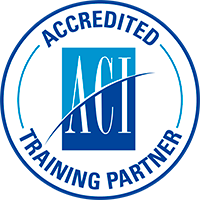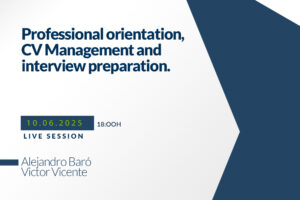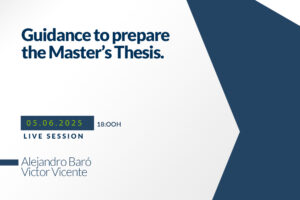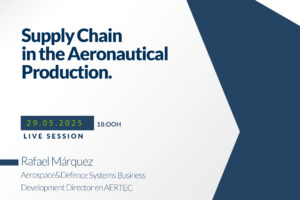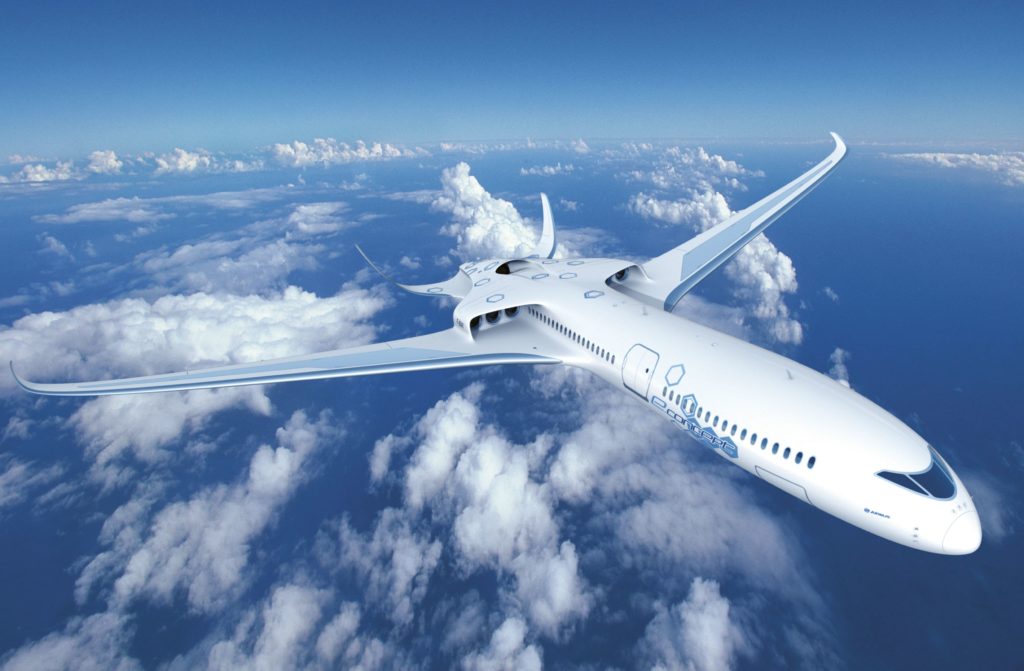
The sustainability of the air transport is the origin of new jobs in the sector
News
Industry 4.0 is giving rise to a growing demand for qualified professionals trained in efficient and environmentally friendly technologies and processes. Workers who want to be part of the next industrial revolution in the field of aeronautics must be endowed with a global knowledge of air transport.
The aeronautical industry is striving to mitigate its environmental impact, more pronounced because it directly affects the atmosphere. The European Commission has marked for this sector that in 2050 it must reduce its CO2 and NO2 emissions by 75% and 90%, respectively. Noise pollution should also get another drastic cut, in this case 65%. The industry works to achieve those goals and, in passing, also lighten its production costs.
Some analysts have compared the new generation of aircraft with the transformation that the trains underwent. Initially, as large consumers of coal, to give way to diesel-driven locomotives, to the current units, faster and quieter thanks to electricity.
Airbus and Boeing are already working with the goal of meeting government emissions requirements. With the largest single aisle cabin in the sky, the A320neo family incorporates the latest technologies, including new generation engines and Sharklets, which together offer 20% less fuel consumption and 50% less noise compared to aircraft of the previous generation.
Firm orders worldwide for the A320neo family have now exceeded 7,300 of more than 110 global customers, to the detriment of the Boeing 737MAX, the unfortunate architect of the deepest corporate crisis the American company has experienced.
With an eye on zero-emission flights, the aerospace giant Airbus has presented the hybrid-electric aircraft E-Fan X, with four gas turbines, which it has defined as the “flagship” of this type of aircraft, since it is 30 times more powerful than its predecessor: the E-Fan 1.0.
With regard to electrification in the aeronautical sector, companies that achieve technological advances in the area of energy storage will succeed, where batteries will be key.
In the field of hybridization, the Asturian airline Volotea has reached an agreement with DANTE Aeronautical to collaborate in the development project of a state-of-the-art hybrid-electric airliner designed to operate short-range routes in the next decade which today are not possible to operate profitably.
Volotea will provide DANTE with market analysis data and technical data. In addition, the company has made available to its engineers and commercial team to develop this market opportunity and provide technical support.
DANTE Aeronautical is an aeronautical start-up with offices in Spain and Australia, created with the mission of revolutionizing the industry with the integration of different disciplines, such as aerodynamics, advanced manufacturing, composite materials and electric motors.
For this, DANTE is designing a transport aircraft of between 19 and 35 passengers, powered by multiple electric motors (Distributed Electric Propulsion in English) whose energy is achieved by a hybrid system of batteries and generator, similar to that of plug-in hybrid cars.
This aircraft will allow the conversion of a hybrid to 100% electric in the future, although for this the battery performance will have to be developed in the next two decades. That is why DANTE considers that a hybrid aircraft is the solution that has the greatest chance of reducing fuel consumption and aviation emissions in the next 15 years.
In relation to supersonic flights, the Concorde’s successor is already in the laboratory. The Aerion group, in which Boeing has invested, works on the AS2 plane and also seeks financing. It will have 55 passenger seats and only for transoceanic flights (there are now half a thousand long-distance daily routes). It seems that the price of the ticket will be expensive, but you can connect London and New York in just over three hours, so it will be the fastest plane in the world.
Airplanes will also fly thanks to photovoltaic panels. The Sky model, designed by Swiss engineers, managed to go around the world with the use of solar energy. Aernnova collaborates with the impellers of this aircraft, which does not need to land and with applications in surveillance and communications.
Logically, these changes or demands of the future will require not only an investment in R&D by companies, but also the configuration of a set of professionals prepared to innovate, to sustainably manage companies and to make possible what on paper It has already been agreed.
It is very difficult to accurately describe the profile of the future professional in air transport, but what is clear is that we can intuit that the following will converge on that professional:
- First, that professional must be disruptive. It must break with the established to be able to innovate or improve the existing. It is not just a matter of age, but a matter of mentality and determination towards an objective.
- You must have technical knowledge that allows the development of processes in a more efficient and sustainable way.
- You must know the negative effects that your work implies in your social, environmental, economic environment, etc.
- Environmental awareness must be one of their priorities.
- You must acquire specific tools for sustainable management of human, economic, social and environmental resources.
- You should know that you occupy a place in the world and that the world institutions have created future goals that force you to adopt a certain behavior.
It is very frequent to read about the Sustainable Development Goals, the 2030 Agenda, sustainability, etc. We believe that those professionals who understand well and get ahead of the knowledge of all this culture that permeates today’s society will have a guaranteed professional future.
ITAérea was the Business School chosen by the United Nations for the development of sustainability training in air transport management. Among these programs we must highlight the Master in Sustainable Air Transport Management.
The MATSM, whose teaching period is 12 months, is currently the only existing postgraduate in sustainable air transport management.
The 2019-2020 edition of the MATSM has begun with a massive participation by students from countries such as the United States, Brazil, Kuwait, Mexico, Costa Rica, United Arab Emirates, Hong Kong, Nigeria, Kenya, Spain and much more.
The teaching staff is composed of professionals from the air sector who hold senior management positions in companies and international institutions of first level. Thus, the offshoring of the teachers in this postgraduate program gives it an outstanding international character.
The MATSM is composed of 5 modules plus a Master Thesis. Each of the 5 modules is identified with a business sector included in air transport: airports, airlines, aeronautical law, air navigation and the aeronautical industry. Each module covers topics of vital importance in aeronautical and airport management such as airport business, airport infrastructure, sustainable construction, airport efficiency, airline structure and organization, airline operations and their sustainability , handling, air cargo, etc.
The diploma of the Master in Sustainable Air Transport Management will be issued by ITAérea Aeronautical Business School in collaboration with UNITAR (UN) and the graduation ceremony will take place at the Palace of Nations in Geneva, Switzerland.
CONTACT info@itaerea.com +34 968 966 885 TEACHERS TRAINING
